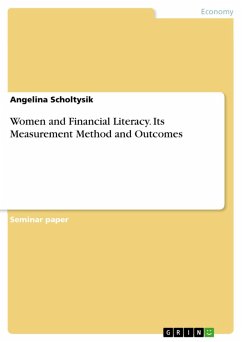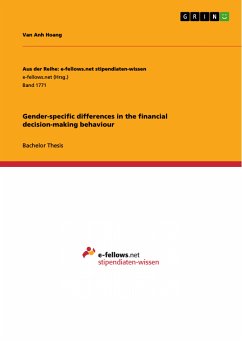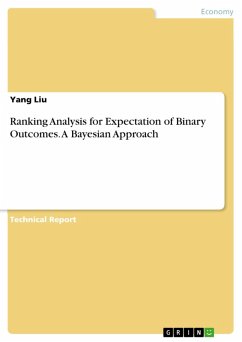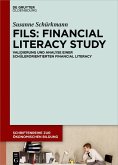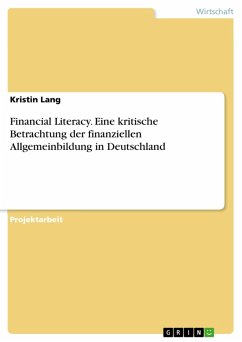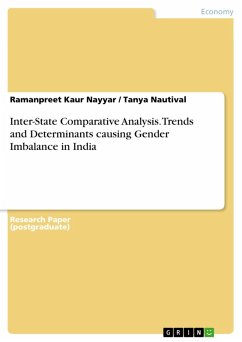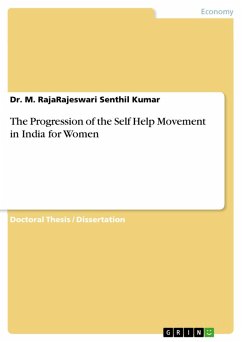Seminar paper from the year 2014 in the subject Economics - Finance, grade: 1,0, , language: English, abstract: The purpose of this paper is to explain financial literacy, its measurement method and outcomes, particularly with respect to gender. Next, we analyze the gender gap by scrutinizing current research on this topic. Finally, we examine current initiatives providing help to women in need of financial education. Data from different household and health surveys revealed that the level of financial literacy is low worldwide. Particularly regarding the gender effect, this finding is concerning. Women tend to be less sophisticated in financial matters than men, whilst facing more demographic and economic barriers. Despite the effort to measure financial literacy, there is no consensus on the sources of gender differences. This suggests that, although policy makers and economies mount initiatives in order to enhance financial literacy among women around the world, research regarding factors affecting women's financial education and attitude towards financial literacy is still in its infancy. In addition, to date little evidence is given on their efficacy of those new established financial education programs. In times of economic and demographic change, personal financial literacy is crucial in everyday life decisions and future planning. Since several countries changed their pension schemes from traditional defined benefit pensions to individual- account contribution schemes and financial instruments become more and more complex, individuals have been confronted with decision makings over savings, investments and consumption on their own, bearing the risk of wrong investment choices and bad liquidity management leading to an insecure financial future. Overall and regardless of the country's economic development and pension scheme, the level of knowledge on financial matter referred to as financial literacy is suggested to be very low around the world.
Dieser Download kann aus rechtlichen Gründen nur mit Rechnungsadresse in A, B, BG, CY, CZ, D, DK, EW, E, FIN, F, GR, HR, H, IRL, I, LT, L, LR, M, NL, PL, P, R, S, SLO, SK ausgeliefert werden.

